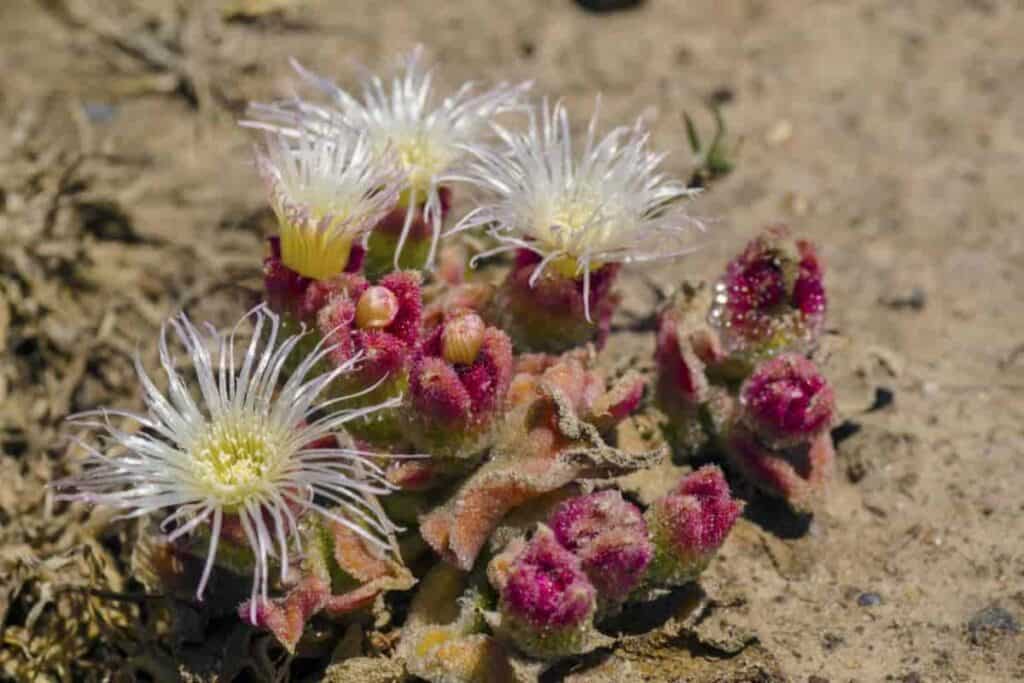My affection for the annual Mesembryanthemum crystallinum, a native of California’s shoreline from central California south into Baja California and especially abundant on the Santa Barbara Channel Islands, was deepened when, at my last visit to the New York flower show,

I found a pot-enthroned specimen of this ice plant heavily ringed around by an admiring crowd. At the flower show, I said I would write something about the plant someday, and I am keeping my promise at this late date.
Winter Rains On Mesembryanthemum
When, on a coastal bluff, dune, or the dry garden of succulents, winter rains bring up the neat mesembryanthemum seedlings; these young are lush affairs with thick juicy green leaves, broadly ovate and radiant with persistent dewdrop-like globules.
Drought comes, and the plant sacrifices some of its foliage, becoming more distinctive as stems and seedpods go ruby-red; the same color edges the leaves, and the whole plant is bejeweled with crystalline vesicles looking like glass beads.
By this time, the mat may be a yard across, and though it still carries small white flowers, it is heavy with seed pods that are fully grown by fall but wait for winter rains before opening.
Potted Mesembryanthemum Crystallinum
The New York flower show proved the value of Mesembryanthemum crystallinum as a pot plant – something few Californians knew.
The plant requires a gravelly medium, excellent drainage, and sun to grow. Though it is native within a quarter of a mile of my house, I let it come up in the vegetable garden as I use the young tongue-shaped leaves in salads, which supply new leaf texture and give a fresh taste and added eye appeal.
I do not doubt that they are rich in vitamins. I have heard that some gardeners find the foliage poisonous to the touch, as the leafage of Primula obconica may be, but I have handled it for years without unpleasantness. My guests eat it without harmful results.
44659 by L Rowntree
